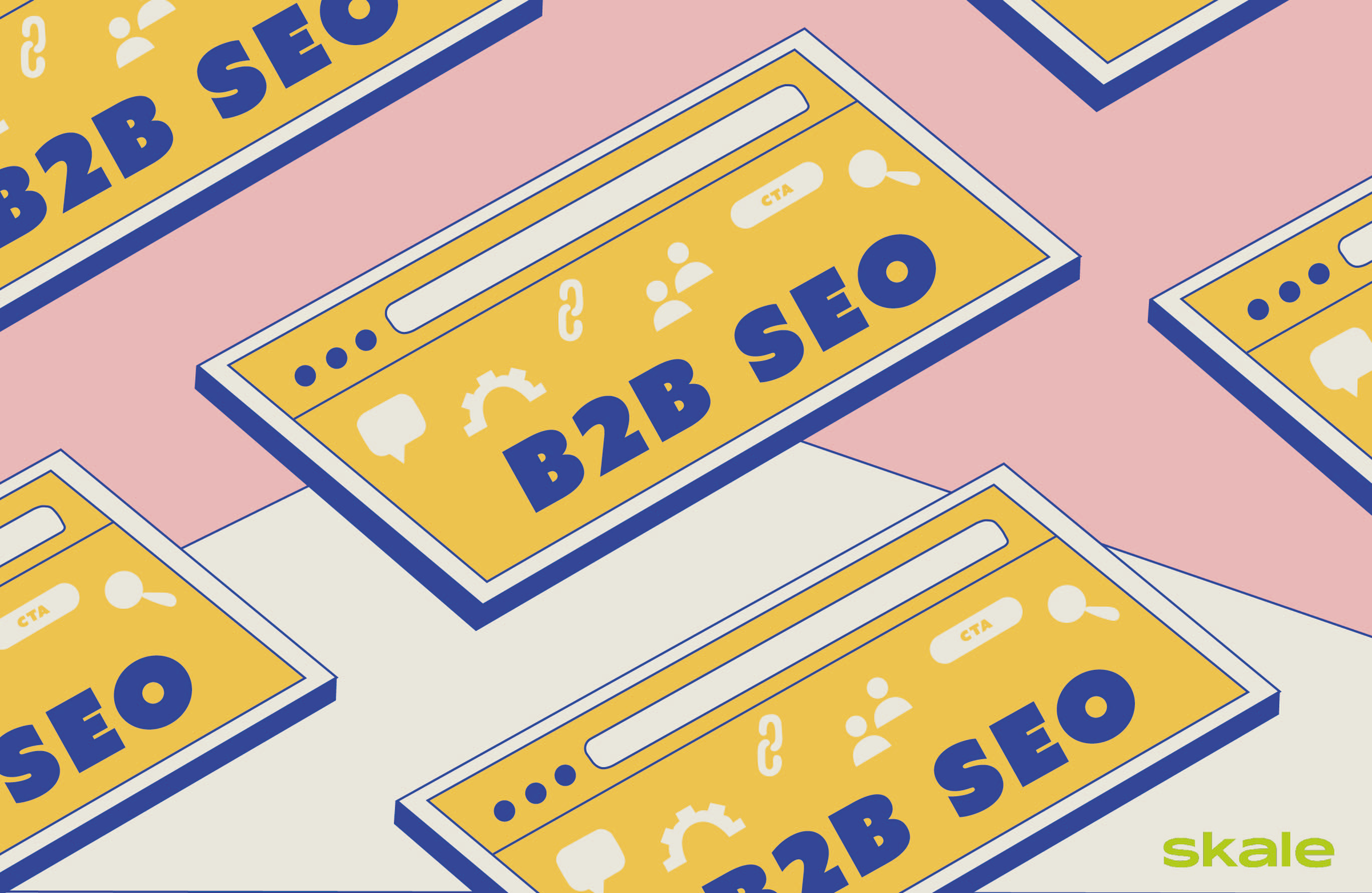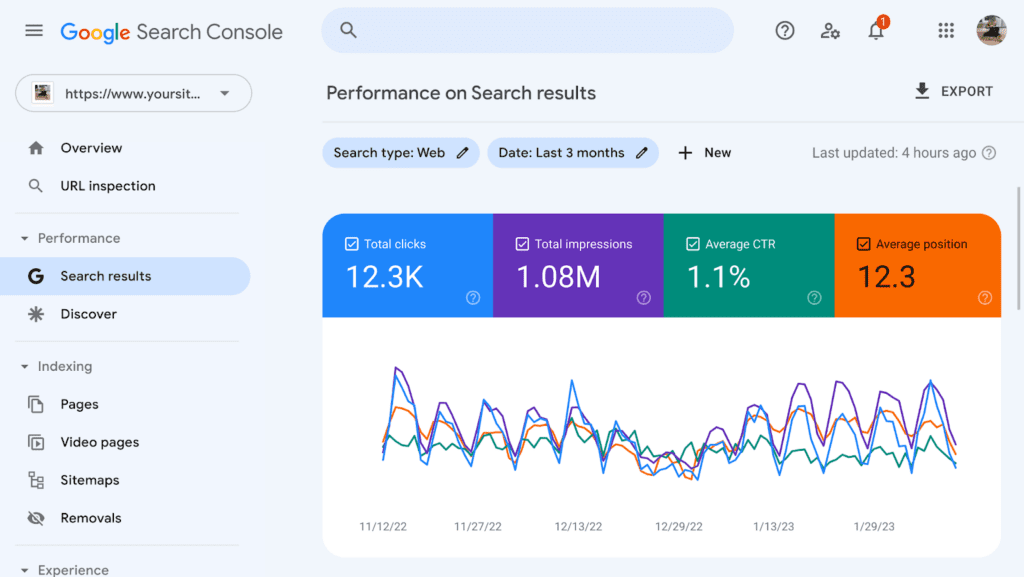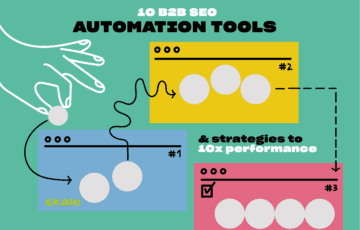
The Power of Partnership: 7 Benefits of Hiring a B2B SEO Agency
These benefits of hiring a B2B SEO agency illustrate why outsourcing your content can help you to drive new revenue for your business.


Hyper scale your B2B SEO strategy
Let Skale’s team of experts help you drive organic traffic, SQLs & MRR
Schedule a callBusiness-to-business search engine optimization (B2B SEO) creates business-orientated content your potential customers are looking for, giving it the best opportunity possible to rank in the top spot on Google.
Why bother?
SEO is one of the best content strategies for business ROI, increasing conversion rates, and boosting demand generation. What’s more, Google dominates over 90% of the market for search engines. To be frank, if you’re not on Google, you don’t exist.
This article will outline the eight steps you need to follow to put together a high-ranking B2B SEO strategy so that you can stay on top of mind for customers, on top of goals for your department, and on top of search engines for your business.
Let’s get to ranking. 🥇
B2B SEO covers three core areas: on-page SEO, off-page SEO, and technical SEO. These pillars come together in a complete B2B SEO strategy and help your content rank on leading search engines.
Successful factors that make up a leading B2B SEO strategy include:
Technical SEO: indexability, crawlability, user experience, page load speed, images, alt-text, schema markup, site architecture.
B2B SEO is often perceived as trickier to navigate than B2C SEO. B2C SEO needs only target one person: the consumer. However, B2B SEO will need to target multiple people to make the same sale: all decision-makers within a business’s team.
Therefore, when it comes to B2B SEO, the target audience is exactly that—an entire audience, rather than a single person. So, your B2B SEO will often have to appeal to multiple searchers, personas, and roles to win a sale at the end of it all.
With this on the table, let’s get into the steps you’ll need to take to build a top-performing B2B SEO strategy.
B2B SaaS marketing (and SEO in particular) can be challenging–that’s a fact.
You might be wondering what makes it so difficult?
There are some key stats to consider:
What do these statistics imply for the SaaS marketer ready to take on the challenge?
First, there’s a wildly growing SaaS market. One where companies are being given millions of dollars as investments for growth. Additionally, as long as you have computers and wifi, you can use a SaaS product, which means competition is international and fierce.
Second, your target audience is narrow–your SaaS product will only fit a certain type of industry, company size, and company need. This makes competition even more fierce because there are a limited number of customers, but an ever-growing number of service providers.
Lastly, the B2B SaaS industry is a high-commitment industry. Companies take their time doing the necessary research, making sure your product truly solves their pain points, as well as fits their company culture and budget.
The nature of SaaS subscription—which typically renews monthly—means companies make their purchasing decision every single month. If you drop the ball, they might decide to switch to another tool, come EOM.
All of this makes SaaS marketing an ongoing job where you need to do more than run a pay-per-click ad and call it a day. No, you’ll need to constantly provide proof to your potential customers–and to your existing customers–that you’re the right choice for them.
Now, if you’re still up for the challenge–hooray!–let’s take a look at what you need to consider and have ready before you can create your successful SEO marketing strategy.
It’s worth mentioning that these steps are steps we implement here at Skale to build SEO strategies for our B2B SaaS clients. They’re an accumulation of team knowledge to help ensure your own B2B SEO strategy is on the right path. Admittedly, we went back and forth between each other; are we giving away too much? The writer won the fight. You’re welcome.
The first step in creating your B2B SEO strategy is to undertake an intensive technical audit and deliver a technical roadmap prioritized by impact, confidence, and ease (ICE).
At Skale, we typically work with the client’s dev team, and action on high-priority items that ensure the website is fast, responsive, crawlable, and technically sound. You won’t get far with search engines if you don’t start with a technical SEO audit.
No client wants to receive a 40-page B2B SEO audit with zero strategic direction, so we prefer to keep things concise and actionable to generate impact fast.
To start with a leg to stand on and win organic traffic, Skale uses a mix of knowledge, experience, and some SaaSy SEO tools to provide an actionable audit that clients can use.
Next up, you’ll want to run your B2B SEO competitor research. There is often a big difference between a client’s perceived competitors and their organic competitors. You’ll be able to see this in search engine results when you conduct keyword research.
At Skale, we take the time to identify these real competitors and reverse engineer the search engine optimization strategy they have used to rank in valuable SERPs. Often we can take these learnings, improve upon them and integrate them into our clients’ long-term B2B SEO strategy.
Learnings from this can positively contribute towards:
The list goes on!
People don’t often immediately think of user research as part of their B2B SEO strategy. However, it needs to be in there, and here’s why. You can get so much quantitative and qualitative data from conducting user research that will drastically affect your entire search engine optimization strategy. It will help you place smart bets and uncover things that typical SEO research can’t.
A few ways to tap into this target audience research are:
At Skale, we use all this data to map out micro-content strategies for each user persona, ensure we hit every touchpoint in the funnel, and turn the clients’ website into a ‘search engine’ for our ICPs.
This is critical in a B2B SEO strategy. You not only want to win a high search volume in organic traffic from the search engine results page, but you want to retain that volume of users on your web pages.
Next up, it’s time to dive into user behaviors.
“At Skale, we track key actions on the website, such as CTA clicks, scroll depth, and user behavior flow, to understand how users interact with the site. We also analyze the customer journey to understand which pages users interact with en route from first touch to conversion.”—Ben Major, Head of Tech & Content SEO.
Often Skale finds that actual behavior is extremely different from assumed behavior. With this valuable information, we can build hypotheses and develop CRO tests to direct the user to the next logical step in their journey—this isn’t always the demo page!
Honestly, this is where many SEO strategies go wrong. They’re so determined to drive every high-ranking blog post through to a product page or pricing page that users are deterred and abandon ship. If your search engine rankings are getting your business in front of people for the first time, then you need to be brand building with your own content, and creating content that builds trust over sales.
The sales will come, don’t be afraid to build a more comfortable journey for users to get there.
Rather than blindly following the data that keyword research tools provide, Skale focuses on content that will actually deliver value for potential users at all stages of the funnel.
This may involve building comparison pages, programmatic templates, landing pages, capturing long-tail queries, and building out content based on the personas that you built during the user research phase of your strategy build.
The team at Skale is also able to leverage vast amounts of data housed in Google Search Console to get ‘real’ volume for topics that other SEO tools may not even acknowledge.
The search volume around these keywords is a key determining factor around your user personas’ search intent and the type of content that will prove useful to them. It’s important not to disregard low-volume keywords here, as even though they have a low search volume, they may be high-intent keywords.


Take the guesswork out of your B2B keyword reserach
Maximize the impact of your user-focused keyword research with our guide
Learn hereIn modern SEO, authority trumps relevancy almost every time. Using the information gathered from the user/keyword research phase, Skale can tackle topics in their entirety and develop a clear internal linking strategy to connect the dots.
Not only does this help increase your perceived topical authority in the eyes of search engines, but also that of users who may be in the awareness phase of their buyer journey.
What does building topical authority look like?
Of course, there’s a ton more to building topical authority, however, we can’t give all of our secrets away!
Check our guide for B2B Content Marketing Agencies in the UK
Whether for content creation or SEO implementation, now’s a good time to call for help. You have a few options here. You can outsource (Ahem… you know where to find us), or you can look to reign in the extra hands in-house.
One thing we will mention is that good talent is hard to find, and anyone with access to Google Analytics tends to think they’re an SEO master these days. So, if you’re going to bring a team in-house, give yourself time to hire and make that offer exceptional. You’re now competing in a global market for talent, and your offer needs to reflect that.
Depending on your business goals—especially if your business goals are answering to investors—align on the SEO strategy that will help you get there quickest. Once you’ve got that, decide whether you want to find a B2B SEO agency that can help out almost immediately or have the time to hire in-house. The choice is yours! 🥰
Lastly, you’ll want to measure the success of your SEO-focussed landing pages, blog content, target keywords, the lot.
Decide on what your KPIs are and keep track of them. Remember, like a fine wine, SEO needs time. Give it time, and don’t expect to see results in a month or even two. Give your strategy three months minimum before you start deciding on whether your bets were correct or not.
A few KPIs to consider are:
For more SaaS SEO KPIs and a breakdown of how you can track them. Check out this article: The 11 Most Valuable SaaS SEO KPIs According to SEO Experts.
Now that you know how to market your B2B SaaS company, here’s some advice and best practices for you to make the most out of your strategy:
Follow these best practices, and you’ll ensure you’re giving your strategy the best chance it can have at success.
Once you have your SaaS marketing strategy and it’s all well underway, you’ll need to track your progress and ROI. Track it constantly and analyze when changes need to be made. However, remember you need patience, especially with inbound marketing strategies.
It’s a popular saying that 20% of your efforts will lead to 80% of your results. Make sure you know which metrics to track and what tools to use to know which 20% you should focus on.
Here are a few B2B SaaS marketing metrics you should keep on your radar:
Check this guide about SaaS marketing metrics if you want to learn why they’re important and how to measure them–and improve them.
Follow the steps, track your results, and you’ll create and nurture a winning B2B SaaS marketing strategy. Play your cards right and see your business grow like it truly deserves, taking you from zero to hero in three months. Remember to stick to the actionable tips we’ve mentioned, and don’t disregard the steps listed that you wouldn’t typically associate with building an SEO strategy—they’re there for a reason!
Lastly, if you do decide you’re ready to call in an extra pair of hands on your SEO journey to success, you know where to find us. Learn more about Skale’s B2B SEO services.

Two B2B SEO heads are smarter than one
See where Skale can take your growth & conversions
See our B2B SEO servicesB2B SEO is exceptionally important as you need to tailor business content to multiple decision-makers within a company. This means building out multiple pillars that appeal to different searchers, their pain points, and jobs-to-be-done. You’re not convincing them to spend their own money; you’re convincing them to spend someone else’s, which often has an even tighter grip around it.
SEO for B2B companies is different for B2C as, in most cases, the spend on your business will be evaluated monthly, if not quarterly. You’ll need to encourage people to make a repeat purchase, not a one-off payment. It means winning someone over and keeping them on your side for the entire customer lifecycle.
You can improve your B2B SEO strategy by following the eight steps listed in this article. Some of these steps include: running a technical audit, conducting competitor research, behavior analysis, and user research.
SaaS B2B marketing is a form of marketing that focuses on the marketing techniques that are most beneficial for B2B SaaS businesses.
To market your SaaS product for B2B you need to have strong branding and position your brand as an industry expert. The best way to market your B2B SaaS product is by using the following marketing tactics:
1. Content marketing
2. Search engine optimization
3. Email marketing
4. Paid marketing
5. Social media marketing
The B2B SaaS market is worth over $170 billion in 2022.
Learn more about
B2B SEO

The Power of Partnership: 7 Benefits of Hiring a B2B SEO Agency
These benefits of hiring a B2B SEO agency illustrate why outsourcing your content can help you to drive new revenue for your business.

15 B2B Customer Acquisition Strategies that Increase Revenue
Want to find new customers who truly value your business? We’re here to help you out with a list of the top 15 B2B customer acquisition strategies.

10 B2B SEO Automation Tools & Strategies to 10x Performance in 2024
Save time with the right B2B SEO automation tools and strategies that are sure to bring your marketing to the next level–we've listed them here.